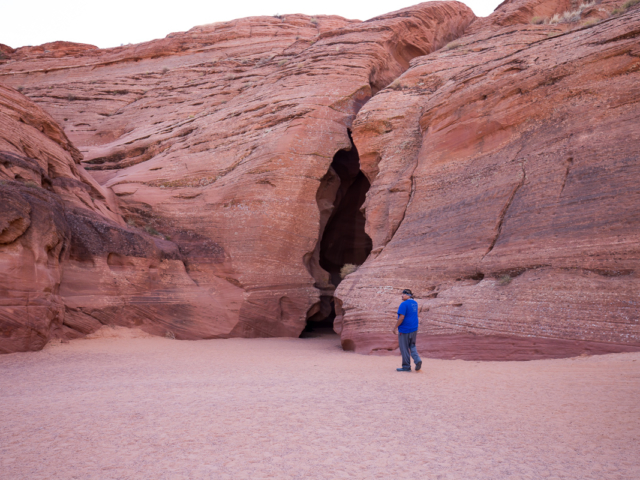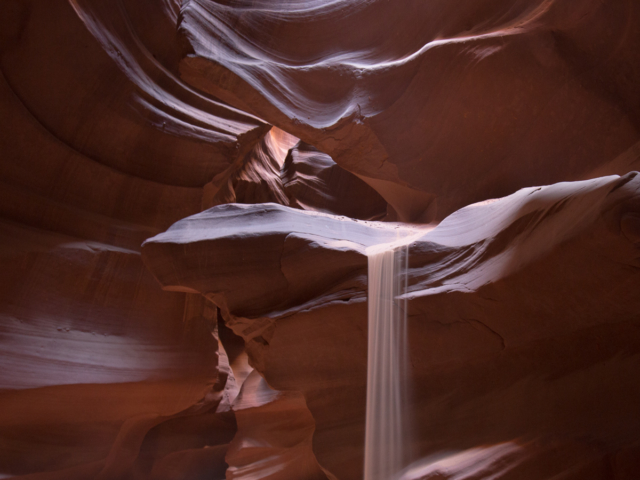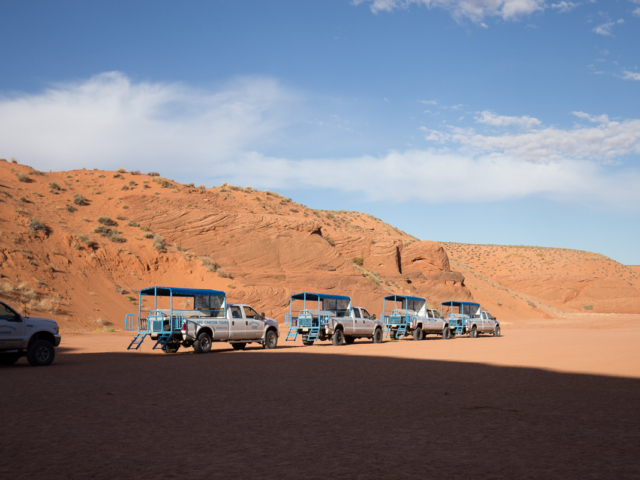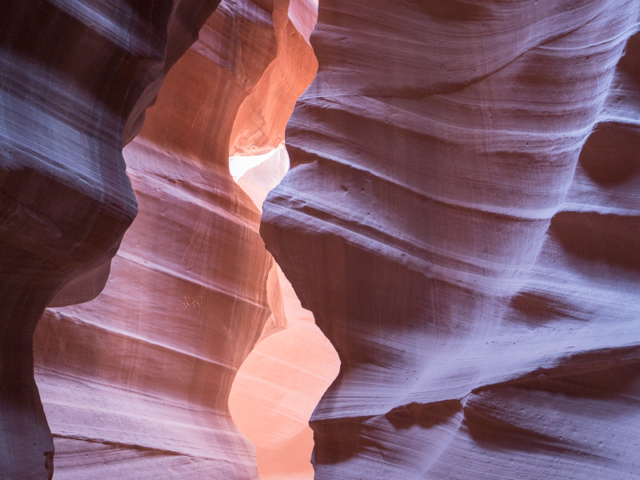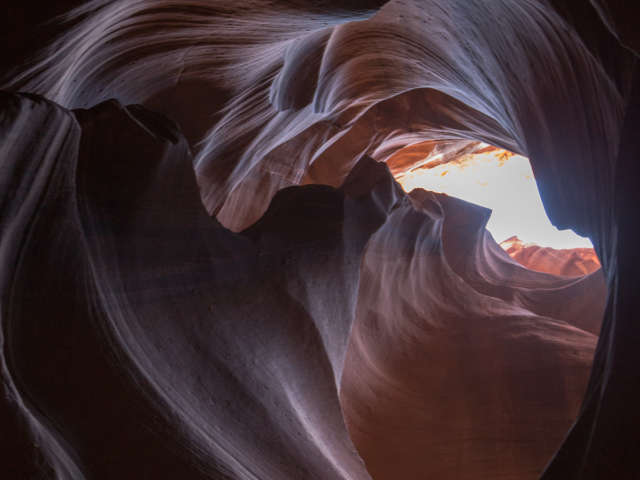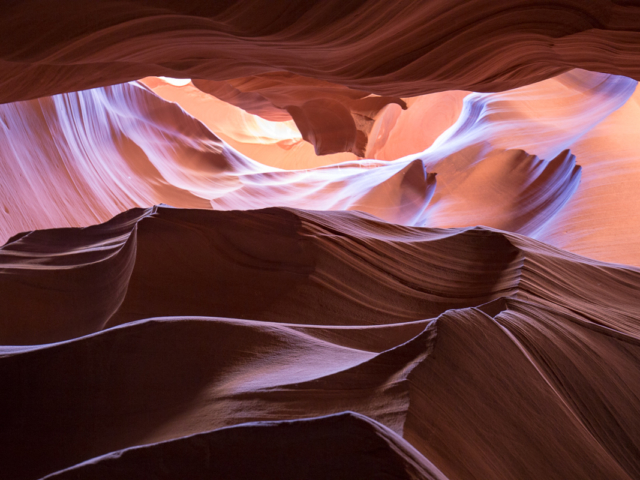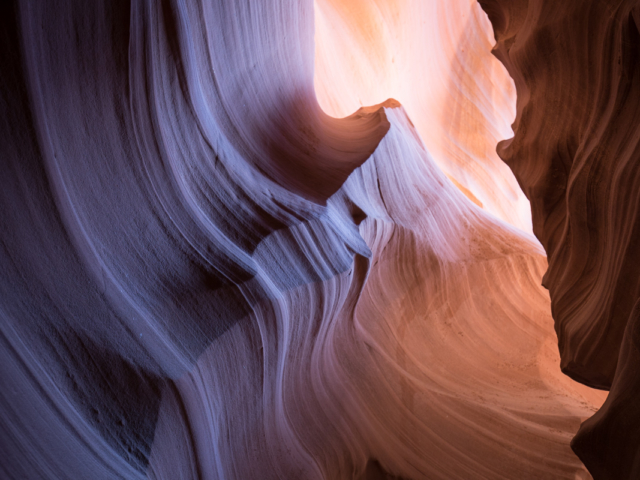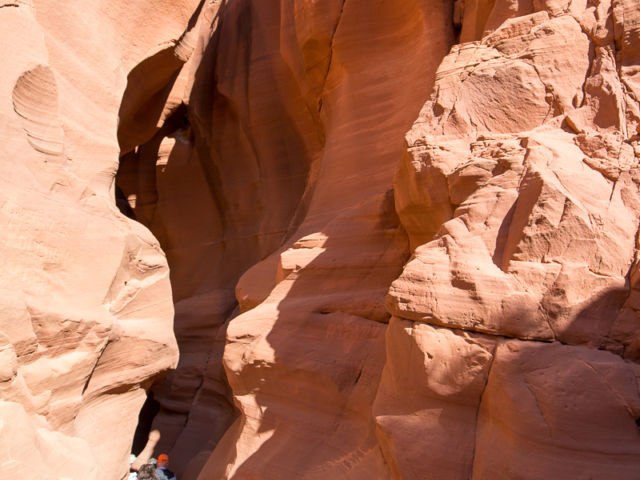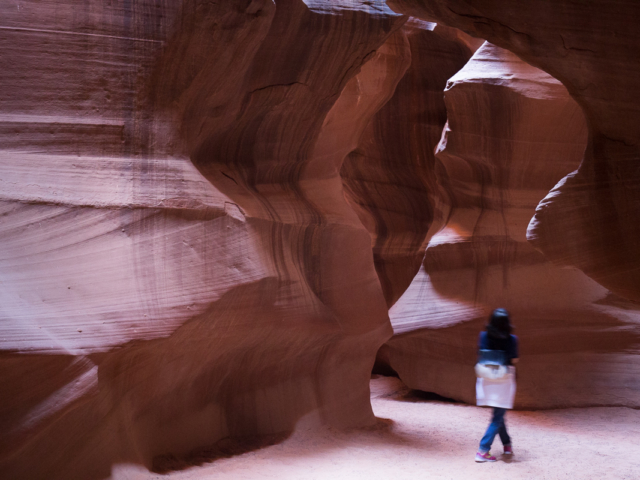Antelope Canyon is a slot canyon in Arizona on Navajo territory. This distinctive narrow canyon is characterized uniquely curvy sandstone formations. The upper portion of the canyon is also known as the “The Crack,” and is about a quarter mile long and 120 feet deep. Upper Antelope Canyon is incredibly popular with visitors year round, although the most common times to visit are late spring to early fall, to accommodate changing light that influences canyon photography.
Upper Antelope Canyon History and Background
Known as “Tsé bighánílíní” by the Navajo, Upper Antelope Canyon is the more popular half of the strikingly beautiful Antelope Canyon, located near Glen Canyon National Recreational Area just southeast of Page, Arizona. It was formed millennia ago by eroding sandstone, and has been run by the Navajo Parks & Recreation Department for generations as part of the Lake Powell Navajo Tribal Park.
This canyon was likely a place where antelope roamed, inspiring the English name. It was considered sacred to indigenous Navajo tribes, and today still holds considerable cultural significance to native populations. However, because the canyon is dry with no water supply, it was unlikely to have been the site of any permanent habitation. Today, Upper Antelope Canyon is popular with visitors from across the globe, particularly for those with an interest in nature photography.
What’s at Upper Antelope Canyon
Upper Antelope Canyon is the more commonly visited part of Antelope Canyon because it’s flatter and more accessible than the lower portion. The entire length of the canyon is also at ground level, so there’s no climbing involved to access the interior, making it better for visitors with mobility issues. The floor is sandy but easy to navigate, and the walls of the canyon are striking from any perspective.
It’s an immensely popular destination for amateur and professional photographers alike, and a shot of this famous slot canyon is almost instantly recognizable by nature buffs. You’ll find that sunbeams reaching down into the canyon’s depths are more common here than in the lower half of the canyon, so it’s easier to get one of those iconic photographs. Because beams are only created when the sun is high in the sky, you’ll find them between the beginning of April and the end of September.
Visitors can opt for two types of tours – regular canyon tours and photography-specific tours. The latter type of tour permits tripods and offers expert tips and advice on how to take your best pictures. Regular canyon tours still provide excellent photographic opportunities and usually cost less. Tours range from a half hour to two hours, and depending on the time of day, can provide intimate access to the canyon without too many other visitors.
Tips for Visiting Upper Antelope Canyon
- Tour guides are mandatory, but there are plenty of tour companies in the area that offer thoughtful, experienced guides.
- The Navajo Nation charges a small fee for access to Antelope Canyon, so include that in your budget.
- The canyon floor is flat and level, but be sure to wear comfortable shoes that will provide good traction on a sandy trail.
- Direct sunbeams are more common in the summer months.
- While sunlight will be less plentiful in the winter months, it’s also a less busy time for tourists and you’ll be able to get more uninterrupted time in the canyon.
- Early in the day is the best time to visit to avoid most crowds and to get some gorgeous photos of early morning sunlight.
- Flash flooding is always a risk in this canyon, so check the weather before you go to make sure weather won’t interfere with your tour.
